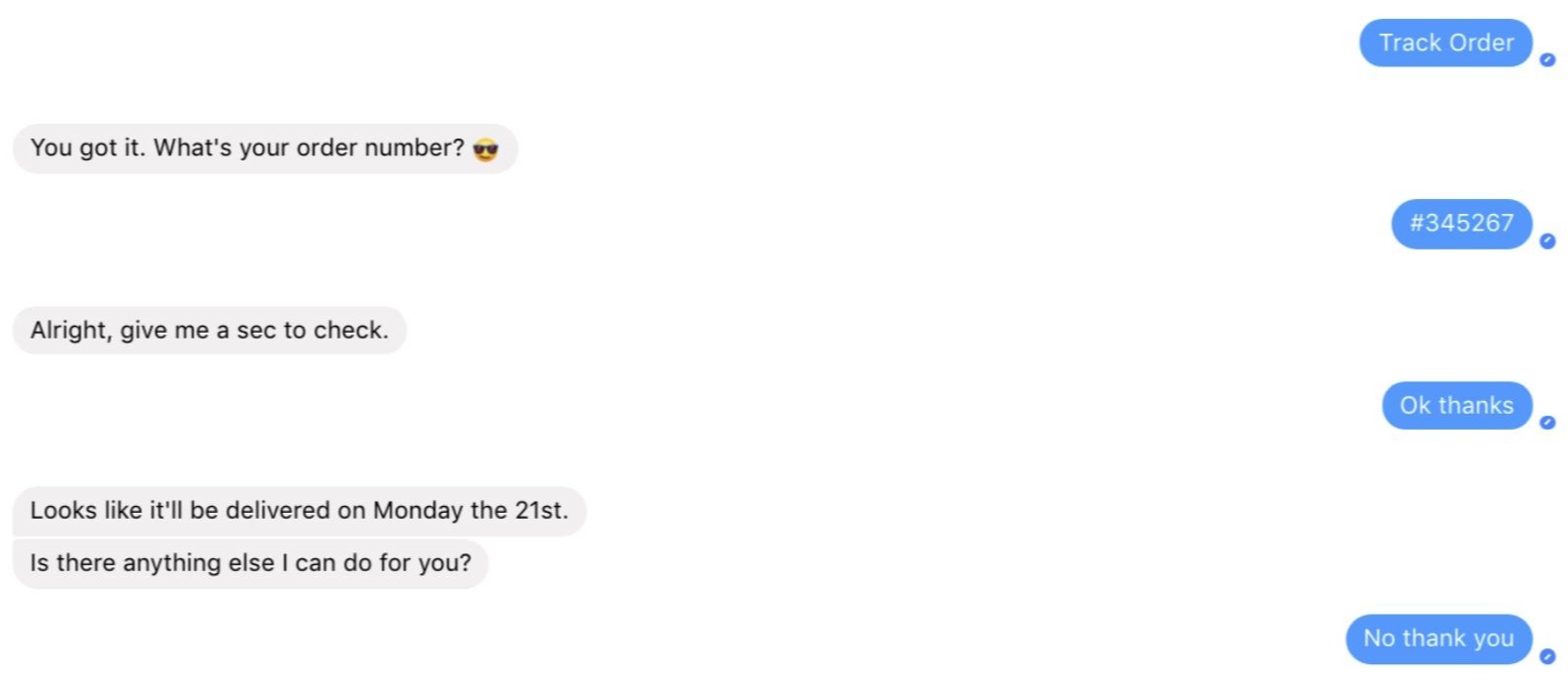With businesses increasingly dependent on relationships rather than transactions, improving customer engagement has never been more important. In fact, a recent study by PWC found that 73% of all people said customer experience was an important factor in their purchasing decisions.
And that’s why you should be reviewing the quality of your customer engagement strategies on a regular (and ongoing) basis.
Let’s look at four tactics you can use…
1. Engage your customers in real-time with live chat
2. Enhance customer conversations with chatbots
3. Focus on bridging the online-retail gap
Engage your customers in real-time with live chat
Live chat provides great value in engaging with your visitors in real-time and increasing customer satisfaction as it allows your customers to get an instant response to their queries. So, it’s not surprising a recent report found that 79% of customers say they prefer live chat purely because of the immediacy it offers compared to other channels.
Some ways live chat helps boost your customer engagement include:
- Proactively engages your customers – for the people who just browse or compare prices, proactively engaging with them when they need help increases the chances of you converting them into buyers
- Understand your customers’ pain points – live chat enables your agents to tap into the pain points of your customers and provide the best solution
- Learn more about your customers’ behaviour – gain insights into your customers based on their visited pages. Post-chat surveys are a good way to collect instant feedback to get relevant information
- More mobile sales – smartphones have revolutionised the e-commerce landscape, with nearly three quarters of British consumers now preferring to shop through mobile devices when buying goods online. You can integrate live chat into a mobile chat window and use it to guide your customers through their buying journey

Enhance customer conversations with chatbots
Chatbots can be deployed on your online platforms, allowing you to assist customers wherever they are and with ease.
The benefits of using chatbots in your customer engagement strategy include:
- Offer personalised experiences – consumers love getting a personalised response from a brand. In fact, more than 70% of them prefer to see personalised ads and tailored marketing. A well-trained chatbot can learn from previous conversations and purchase data to improve the quality of its responses and make your prospects feel special
- Recommend the right products – chatbots can improve your customer service by suggesting the right products or services to your customers. They also provide a more streamlined user experience and save visitors the unnecessary hassle of having to search through multiple webpages to find what they need
- Predict your customer’s intent – AI-powered chatbots have the ability to spot customer intent and follow up with relevant conversations to engage and delight them. By setting up your bots to activate based on customer intent, you’ll significantly reduce your chances of missing out on a sales opportunity
- Engage your customers 24/7 – chatbots can offer round-the-clock support to your customers and answer their common queries instantly. They also help you filter the urgent customer questions from the not-so-urgent, helping your agents prioritise their time effectively
 You can read more about the role chatbots play in customer satisfaction by clicking here.
You can read more about the role chatbots play in customer satisfaction by clicking here.
Focus on bridging the online-retail gap
As we mentioned earlier, the modern customer prioritises their experience with a company more than ever before. Here are some ways you can enhance your customer experience to boost engagement and successfully bridge the retail-online gap:
Provide tailored experiences
Today’s customers want to be made to feel special, so by creating individual, personalised experiences, you can do just that.
Some examples of personalisation include:
- Acknowledging returning customers and website visitors (e.g. greeting them by their first name)
- Personalised product suggestions to your customers (these suggestions will be based on what you already know about your customers such as previous website activity)
- Exclusive bundles and pricing offers based on existing customer data

You can read more about the benefits of personalisation by clicking here.
Reward your most loyal customers
Not only do loyalty schemes help your most loyal customers feel more valued, but it also ‘gamifies’ the shopping experience and gives them an incentive to keep buying (and place bigger orders) from you.
For example, you could offer bronze, silver, gold levels within your loyalty scheme and create levels which your customers have to climb. Then each level could come with different perks and the perks improve as you climb.
Create an omnichannel experience
Modern customers like to jump from one channel to another and their path will often vary from person to person. By offering an omnichannel experience, you can seamlessly join all of these customer touchpoints.
This allows your customers to easily pick up where they left on one channel (e.g. social media) and continue their experience on another.
Tap into social media
The popularity of social media only continues to grow. Recent studies have found that 80% of millennial B2B buyers say social media influences their buying decisions. So, it’s crucial you put in steps now to build your social media presence (if you haven’t already).
Social media can help you:
- Engage with your target audience by offering customer support or curating user-generated content
- Spot trends in the market and build them into your product, marketing and sales strategies
- Widen your brand reach via targeted ads
- Offer purchasing functionalities – for example, allow your customers to place an order straight through your social media channel. This saves them the hassle of having to head over to your website to complete their purchase
Use your online store to improve your offline (and vice versa)
It would be wrong to say physical stores are completely dead – they’re still the most direct way for people to engage with your brand. But they need a shift in purpose. Your physical store must coexist with your online platform and become an extension of your services.

For example, your physical stores could become showrooms that allow customers to touch and ‘experience’ your products/services before they buy them.
Then make your online store as multi-sensory as your offline. Tools like augmented reality can help your customers see what your products will look like in real-life without needing to visit one of your physical stores.
Optimise your checkout
Shopping cart and checkout abandonment are all too common behaviours among online shoppers. In fact, the average e-commerce store loses 75% of their sales to digital cart abandonment.
Fortunately, there are various tactics you can do to reduce this number in your business. Some of them include:
- Keep it simple – reduce the header and footer on your checkout pages to remove distractions
- Reduce the amount of different navigations at checkout – this is most effective once you’ve created an engaging checkout flow that consumers don’t feel lost in
- Offer live chat support – this can reassure your prospects and help them get immediate answers to their queries
- Avoid hidden shipping costs – the easiest way to do this is by offering free shipping. But if you can’t afford free shipping, then be sure to tell your customers everything about the shipping cost. If necessary, provide a built-in calculator that allows buyers to determine estimated costs based on weight and quantity of items
Helping you build a long-lasting and effective customer engagement strategy for the future
E-commerce businesses that are solely focused on selling are going to lose a lot of customers. Why? Because today’s consumers expect personalised interactions and want to be treated as unique individuals. They also want a customer journey to remember.
At Columbus, we’ve helped over 300 retailers across the world. We’ve helped improve their user experiences (UX) processes and provided system support so they can deliver a next-generation customer experience that covers online, in-store and through a call centre.
And we can help your business too. Click the button below to read our customer success stories, the latest industry insights and more.

